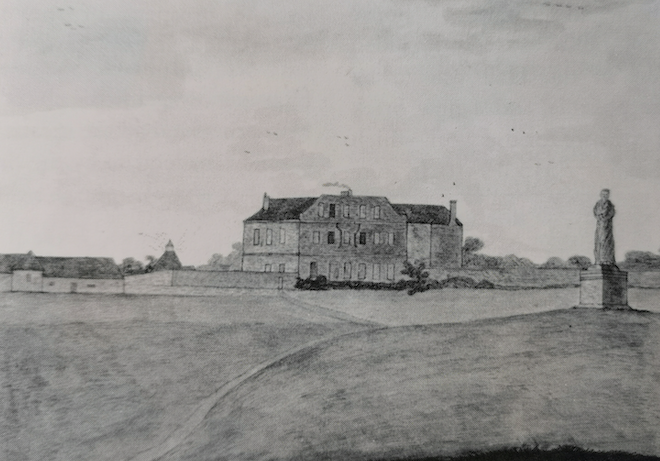Search by topic
- archaeology
- Building of Local Interest
- charity
- church
- crime
- dressmaker
- fire
- Great Eastern Railway
- Listed building
- Mapping Relief
- medieval
- oral history
- poverty
- Public House
- Rattee & Kett
- Religious House
- Roman
- scholar
- school
- Then and Now
- tudor
- women
- work
- world war one
- world war two
Search by text
 Drayton Manor House painted by Relhan, 1809
Drayton Manor House painted by Relhan, 1809Dry Drayton Park
History of Dry Drayton Park
The site was excavated by archaeologists at the end of the 1970s. A report can be found in Proceedings of the Cambridge Antiquarian Society Vol LXX 1980. The following information is taken from that report by M F Sekulla.
Before the Dissolution the Park was part of the estates of Crowland Abbey. During the Baron’s War in 1266 an attempt was made to ravage Drayton and burn the Crowland manor. As a result there is evidence that a hall, mill and carthouse were rebuilt the following year. By the later 15th cent the main Crowland estate in Drayton was leased to the Hutton family. They bought it after the Dissolution for £546.
1596
John Hutton on death passed estate to his wife Elizabeth
1625
Deat of Elizabeth Hutton, estate passed to Robert Lawrence
1652
Heirs of Robert Lawrence had by this year sold to the Cutts family for £4,900. Leased to Humphrey Weld.
1665
House is sublet to Joshua Sedgwick
1670
Humphrey Weld inherits the property. House is rebuilt by 1678.
1685
John Howland
Early 18th cent:
Dukes of Bedford own the estate. Account books for the estate and house survive for 1709-1734.
Mid 18th cent:
Estate let out to tenant farmers
1817
House and surrounding buildings demolished and much of the stone and brick was used to build Scotland farm. Sketch from 1809 survives. It was described as a red brick Gothic building with very dark rooms, several parlours, large kitchen and six of seven bedrooms.
Two stone figures of a man and a woman in Drayton park, demolished, together with the house in 1817, proved a fertile source of terror to village children, who were told that they looked in at the church windows, and went to drink at the pump when they heard twelve o’clock strike. (History of Dry Drayton, Walker, 1876)
1870s:
Only icehouse and stables survived. These had disappeared by the start of the 20th century.
1978-79 Excavation
This produced evidence of pottery from 12th to 14th century. There was then little occupation until the mid 16th century. Great activity on the site took place in the third quarter of the 17th cent. As the buildings were demolished all the spoil seems to have been reused in the construction of other buildings in the village.
Contribute
Do you have any information about the people or places in this article? If so, then please let us know using the Contact page or by emailing capturingcambridge@
License
This work is licensed under CC BY-NC-SA 4.0





